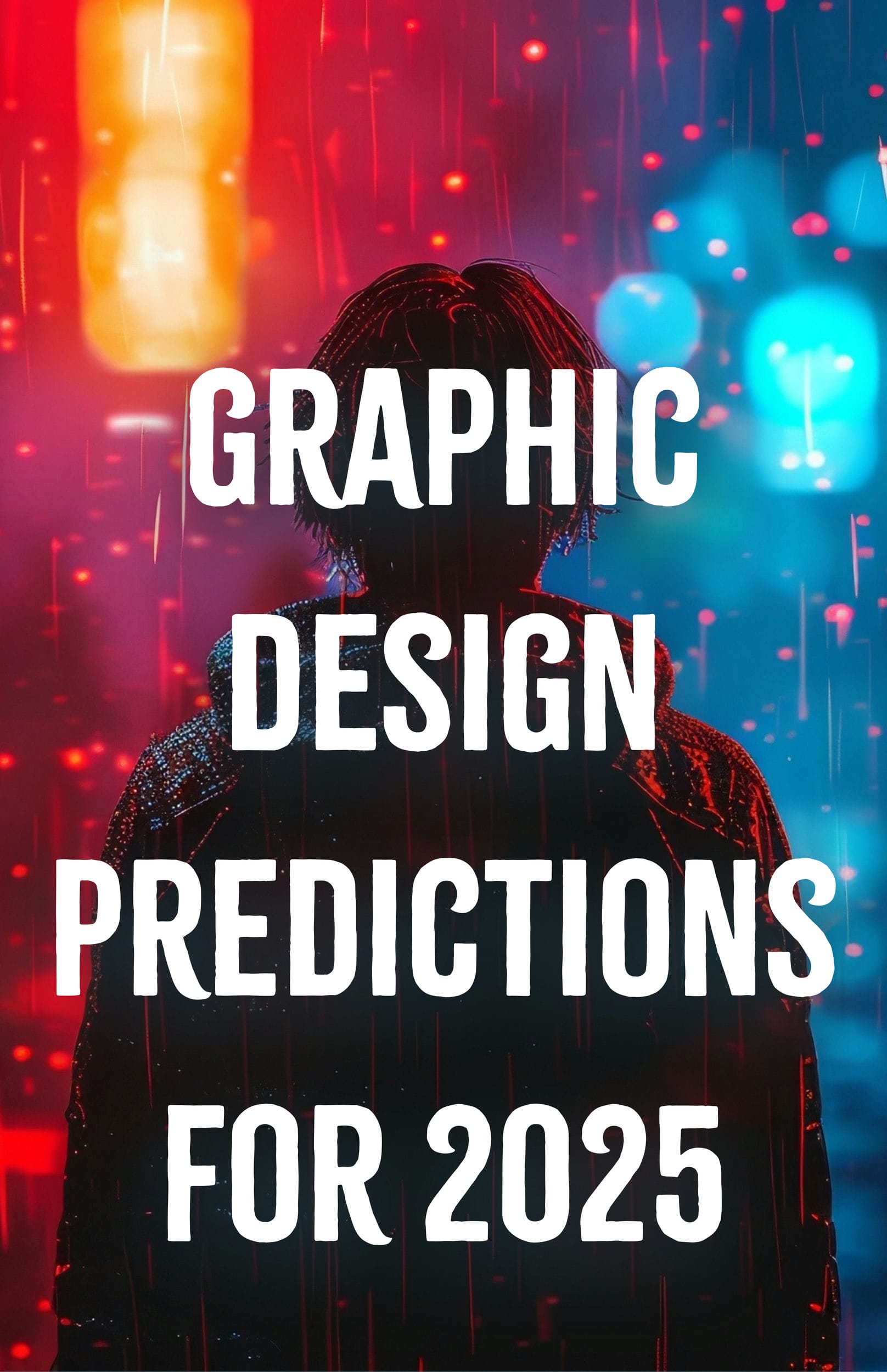
Graphic design is always in flux, and as we approach 2025, it’s exciting to imagine the innovations and changes that will shape the industry. From AI-generated brands to biometric-driven design, the future holds many surprises. Let’s explore some fresh predictions that will transform the way we think about and practice graphic design.
Biometric-Driven Design
Imagine designs that adapt in real-time to users’ emotional states. By 2025, biometric-driven design could become a reality. Using biometric data like heart rate, facial expressions, and even brainwave activity, designers could create responsive experiences that change based on how users feel. For example, a website could alter its color scheme to soothing tones if it detects stress, enhancing user comfort and engagement.
AI-Generated Art and Design
While AI has already begun to make its mark, the next few years will see a surge in AI-generated art and design. By 2025, AI tools will become sophisticated enough to create entire design projects autonomously, from logos to full branding packages. These AI tools will learn from vast datasets to produce unique, high-quality designs that can be customized to meet specific client needs, significantly speeding up the design process.
Hyper-Personalized User Interfaces
Personalization will reach new heights with hyper-personalized user interfaces. Future websites and applications will leverage advanced data analytics and machine learning to offer highly tailored experiences. This could mean interfaces that rearrange themselves based on user habits, predictive design elements that anticipate user needs, or content that adjusts in real-time to individual preferences. This level of personalization will make digital interactions more intuitive and engaging.
Multi-Sensory Design Experiences
2025 will see a rise in multi-sensory design experiences, integrating not just visuals but also sound, touch, and even smell into digital interactions. For instance, haptic feedback technology could allow users to “feel” textures on a touchscreen, while scent diffusers connected to digital devices could release fragrances in response to specific on-screen actions. These multi-sensory elements will create more immersive and memorable user experiences.
Augmented Creativity with Generative Design
Generative design, which uses algorithms to generate a multitude of design solutions based on set parameters, will become mainstream by 2025. This approach allows designers to explore a vast array of creative possibilities quickly and efficiently. By setting specific goals and constraints, designers can use generative tools to create innovative and optimized designs that would be difficult to conceive manually. This method fosters augmented creativity, blending human intuition with computational power.
Ethical Design and Data Privacy
As concerns about data privacy continue to grow, ethical design will become a major focus by 2025. Designers will need to consider how they collect, use, and protect user data. Transparent data practices, user consent, and privacy-first design principles will become standard. This shift will not only build trust with users but also ensure that design practices align with evolving legal and ethical standards.
The Metaverse and Virtual Worlds
The concept of the metaverse—an interconnected virtual universe—will significantly impact graphic design by 2025. Designers will be tasked with creating immersive virtual environments for social interaction, work, and entertainment. This will involve 3D modeling, virtual reality (VR) interfaces, and interactive elements that make virtual spaces feel as engaging and functional as the real world. The metaverse will open up new avenues for creativity and user interaction.
Voice User Interface (VUI) Design
Voice user interfaces will become more sophisticated and widespread by 2025. Designers will need to create intuitive and seamless voice interactions for applications and devices. This involves understanding natural language processing and designing conversational flows that feel natural and user-friendly. As voice assistants become more integrated into daily life, VUI design will play a crucial role in shaping user experiences.
Quantum Computing and Design
Quantum computing, though still in its infancy, has the potential to revolutionize graphic design by 2025. With its unparalleled processing power, quantum computing could handle complex design calculations and simulations at unprecedented speeds. This could lead to breakthroughs in fields like generative design, AI art creation, and real-time 3D rendering. Designers will need to stay informed about this technology to harness its potential fully.
Embracing the Future of Graphic Design
The future of graphic design is brimming with exciting possibilities. As we look ahead to 2025, embracing these emerging trends and technologies will be essential for staying ahead in the industry. Whether it’s leveraging biometric data for personalized experiences, exploring the creative potential of AI, or designing for the metaverse, the key is to remain adaptable and innovative. By doing so, designers can continue to create impactful, forward-thinking work that resonates with audiences in new and meaningful ways.





